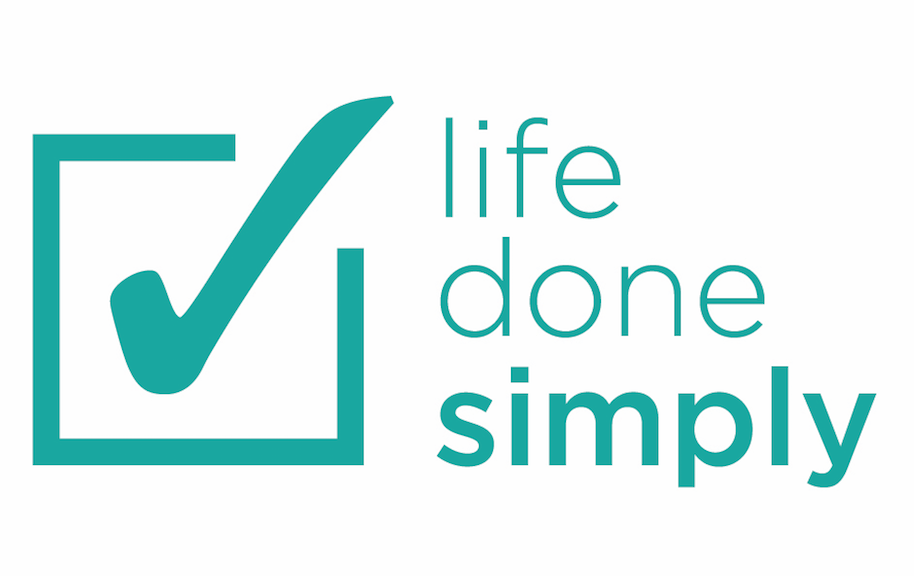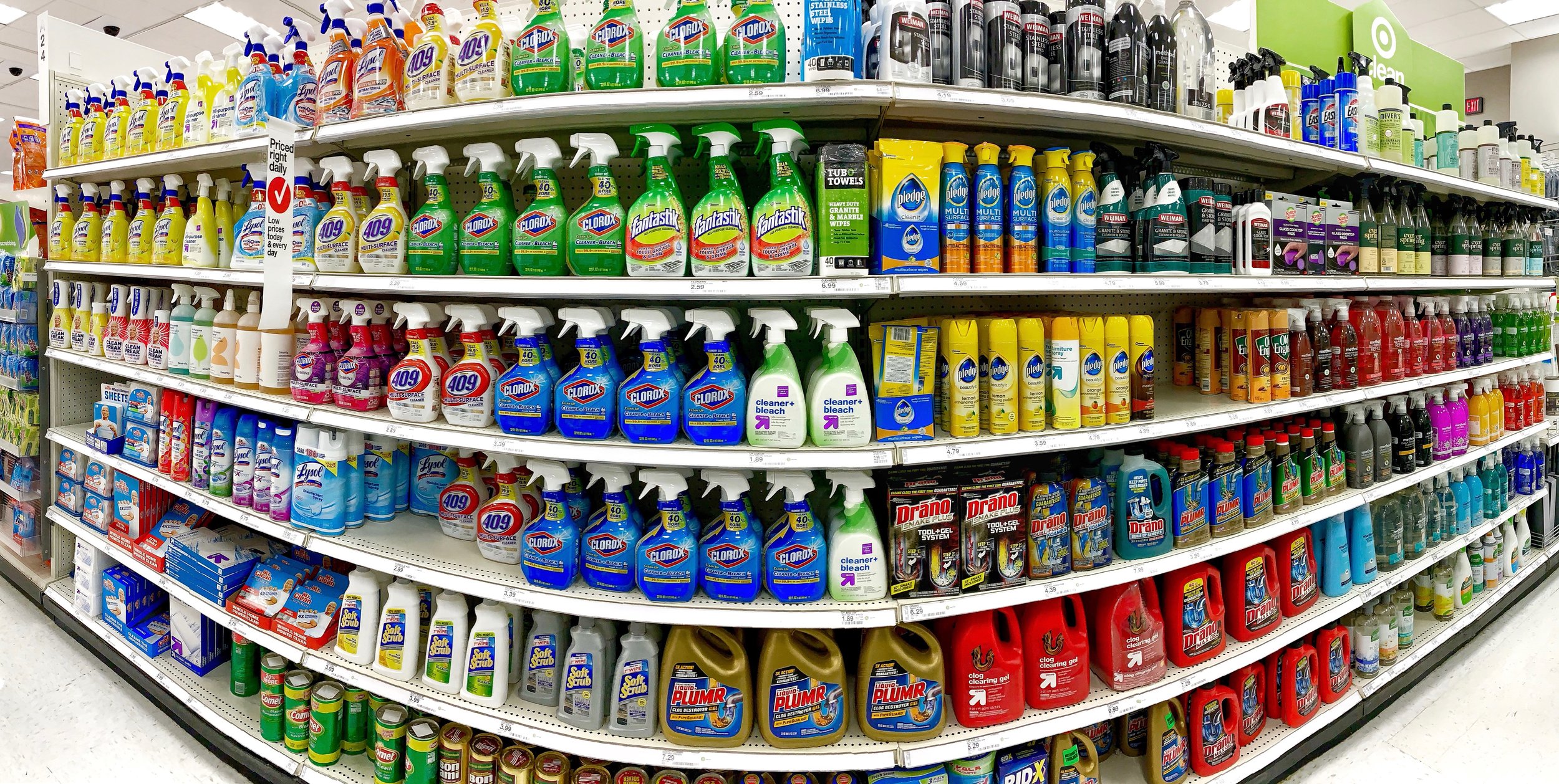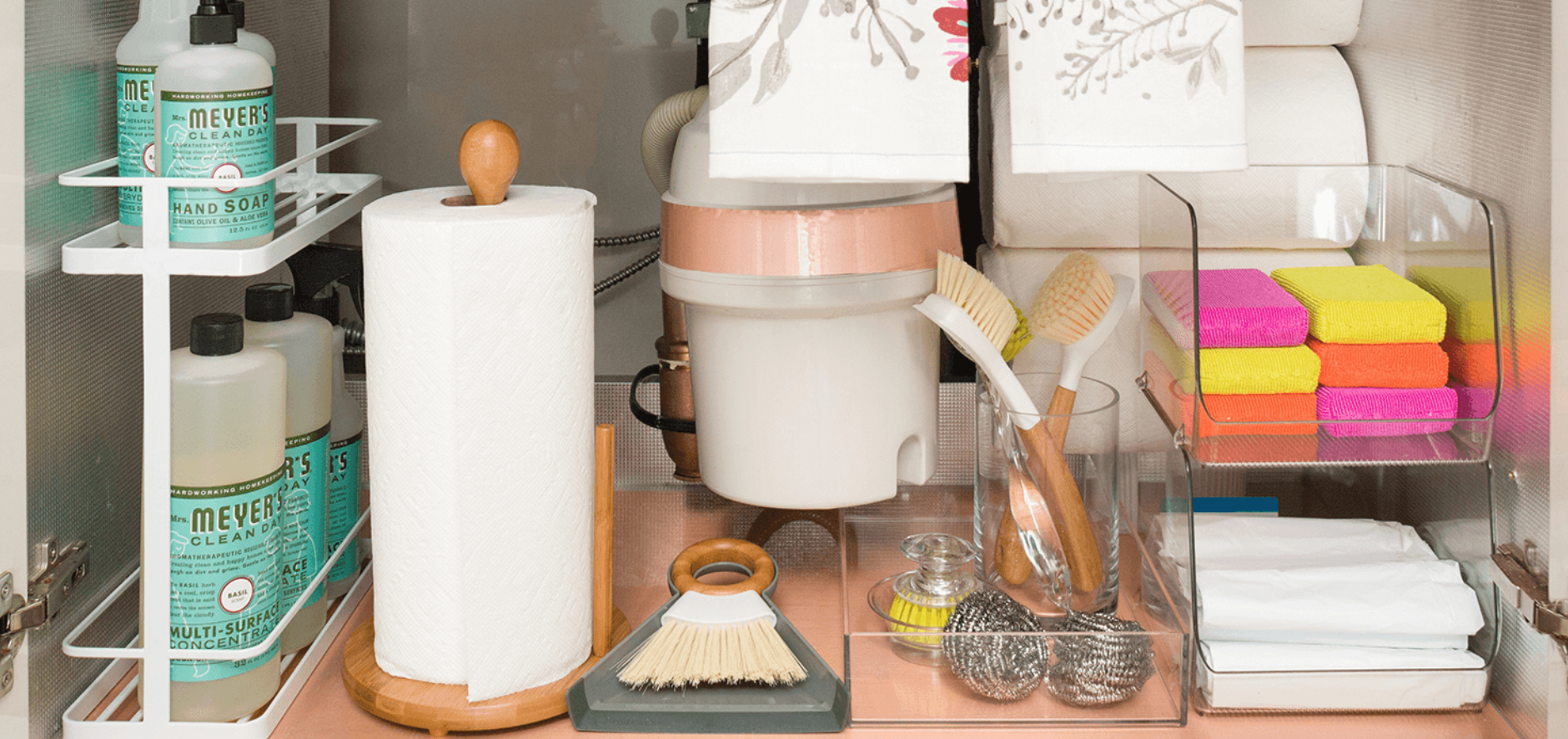Weekend Decluttering Challenge - Cleaning Supplies
/In 1898, B.J. Johnson developed a formula for soap, which would become Palmolive. In 1917, the Electro-Alkaline Company, now Clorox, started giving away bottles of low-concentrated bleach at the family’s grocery store. Then on July 1, 1941 the first television commercial aired, which ushered in the golden age of consumer advertising, and we’ve never looked back.
Today, the average American family spends about $40 to $50 each month on cleaning supplies. That $600/year is accumulating underneath our sinks and in our mudrooms. Many families admit to purchasing new cleaning products, even though they have a perfectly good substitute at home. Clever marketing has us second guessing our cleaning needs, convincing us that the next new product will make the cleaning process easier.
So how is it that grandma was able to keep her whole house clean with just a few key products?
While decluttering your cleaning supplies, keep that question in mind. You might find that you, too, have been swept up in a clever marketing campaign.
Step 1: SORT all cleaning products, sponges, rags, brooms, & mops.
Grab every product you are storing under the kitchen and bathroom sinks, in the mudroom, the garage, and wherever else you are hiding household cleaning products. Categorize by function: glass, countertop, tub/shower, toilet, carpet, dish and laundry soap, etc. How many duplicates do you have? Check all bottles for leaks. Check to see if the nozzles work. When you reach for a bottle of glass cleaner, the last thing you want is for the nozzle to give you trouble.
Do household cleaners expire? Sort of. Degrading plastic containers can alter formulas. According to the Good Housekeeping Institute, products with antibacterial ingredients lose their effectiveness after one year. Other surface cleaners should remain effective for up to 2 years. Laundry detergents should be used within 1 year and automatic dishwashing detergents should be used within 3 months. Metal polishes last for 2 years. But seriously, how many times have you polished your silver in the last 2 years?
If you are storing multiples throughout the house because it’s more convenient, do you remember where they are when you need them?
Step 2: Reorganize your cleaning supplies
Now that you have a firm grasp on what you have, where and how do you store them? Of course that depends on how and when you clean and what type of storage you have available, but regardless, there are a few rules that work for almost everyone.
Keep items visible. If your home lacks storage, under the sink is the most logical home for your supplies. If you have a mudroom or laundry room, this is the best place to store cleaning products. Here they are kept up out of the reach of children, and storing items at eye level will also make it easier on you the next time you’re looking for the right product. Use see through bins or open baskets to house smaller items like cleaning rags and sponges.
Duplicates are permitted. Unless you usually clean your whole house in one day, it makes sense to have a bottle of toilet bowl or tub/shower cleaner located in each bathroom. Sometimes convenience is simplicity! But do you need 2 oven cleaners? Probably not. Keep stock/extras stored out of the way (but easily accessible), like in a laundry/mudroom or linen closet.
Remove unnecessary packaging. Take your trash bag roll out of it’s box and remove any plastic wrappings from products. All of that packaging clutters up the space and gets in the way when we’re trying to quickly get a cleaning job done.
Think UP! There are inexpensive products that can help you maximize the space in your cleaning cabinet. 3M Command hooks, tension rods, over the door organizers, and paper towel dispensers can all be used to hold cleaning tools up and off of surfaces.
Step 3: Dispose of old cleaning supplies (household hazardous waste)
Empty bottles, brooms, mop heads, sponges, and rags can be tossed in the trash, but what do you do with bottles of bleach, aerosol cans, and other possibly hazardous liquids? First, always check the manufacturers bottle for instructions. Some water-soluble products, products normally mixed with water during use, can safely be disposed of down the drain. Safety Alert: Do not mix products during disposal.
The Water Environment Federation has a household waste chart that you can use as a guideline.
Septic System?? If you have a septic tank, additional caution should be exercised when dumping cleaners down the drain. Septic systems rely on healthy bacteria, and there are certain chemical substances that cannot be used with them. Be sure to read the labels to determine if a product could damage septic systems.
Recycling - Check with your local environmental, health, or solid waste agency for more information on household hazardous waste options in your area. Most counties and large cities have collection sites where you can drop off cleaning products for free, and they will properly process and recycle the waste so you can have peace of mind that you are are keeping your environment clean.
Happy Organizing!
Aimee Olson of Life Done Simply is a Productivity and Organizing Coach and is a member of the National Association of Productivity & Organizing Professionals (NAPO).





